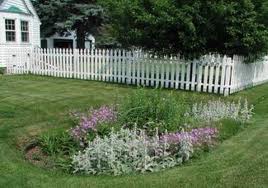http://www.youtube.com/watch?v=GOLf2RbxmzE
Water Conservation is a Must!!!
I have made the executive decision to combine two blogs into one: Steve Chaney, Horticulturalist with Texas AgriLife Research and Extension and the Water Conservation Advisory Committee meeting for the City of Fort Worth.
The information is very closely related and mirror each other.
I was appointed to the City of Fort Worth's water conservation committee after voicing my concerns to the Director of Water and Assistant City Manager that we as citizens were not doing enough to conserve water, especially during a long lasting drought.
As the newest member of the committee, I absorbed a lot of information at that meeting as well as the briefing I received the day before from the Tarrant Regional Water District.
Water conservation is a long term plan and a drought plan is more immediate.
 |
| Lake Benbrook |

 |
| Tarrant Regional Water District |
Tarrant Regional Water District oversees the four water reservoirs and is responsible to provide additional water resources to a 16 county region. Fort Worth treats the water and then sells it to 30 wholesale customers (other municipalities). Tarrant Regional Water District has enforced Stage 1 water restrictions in August 2011. Those restrictions mainly pertain to irrigation watering only twice a week. Fort Worth already had restrictions on no watering between the hours of 10 am and 6 pm. City staff was asking the committee's recommendation on whether we should stay in Stage 1 restrictions even if we come out from a water level requirement. I stated that we should stay in Stage 1 because everyone will be use to the restrictions. It will confuse everyone if we go out and then have to go back in after this Summer coming up.
City of Fort Worth's list of programs for water conservation are:
high efficiency toilets
high efficiency clothes washer incentives
ICI (institution, commercial, industry) customer water audits
Cooling tower incentives
irrigation system evaluations
rainwater harvesting incentives
golf course conservation
etc.
I don't believe neighborhoods are aware of the programs that the city offers,let alone the education on water conservation, other than the lawn whisperer.
Steve Chaney made recommendations for conserving water that is NOT reaching the populace but should be marketed by the city.
Rain gardens are a great example that doesn't take a lot of land but important for run off when it rains. It allows the soil to soak the water instead of impacting the storm water and flooding the sewers. Examples below.
 The other important element to a water conservation plan is installing native plants. The City of Fort Worth does not require nor encourage as far as I can tell. They encourage native trees but that is all. There are no incentives. In fact, code enforcement was called when my mother had wild flowers growing in her front yard. The ordinance stated that you couldn't have anything growing over 12 inches. She won that battle because of the wildflowers being encouraged in other cities in Texas. But in a single family neighborhood, people like to see monotony, sameness. Native plants use much less water and maintenance.
The other important element to a water conservation plan is installing native plants. The City of Fort Worth does not require nor encourage as far as I can tell. They encourage native trees but that is all. There are no incentives. In fact, code enforcement was called when my mother had wild flowers growing in her front yard. The ordinance stated that you couldn't have anything growing over 12 inches. She won that battle because of the wildflowers being encouraged in other cities in Texas. But in a single family neighborhood, people like to see monotony, sameness. Native plants use much less water and maintenance.Steve stated a good rule of thumb for a resident's yard is: 1/3 turf, 1/3 planting beds, and 1/3 permeable hardscape.
Texans use between 8 and 9 billion gallons of water per day. The aquifers are recharged at a rate of 4 to 5 billion gallons per day.
Conservation is the easiest and cheapest.
We take available clean water for granted and I don't want to appreciate it when its gone. We need to appreciate and conserve it now.
The city staff actually stated that there needs to be a balance because they make money by selling water so if everyone uses less, then they make less money. They are concerned about raising rates especially for Tier 1 customers. People who use very little water and may be on a fixed income.
I believe the city should raise the rates because if they don't then people definitely will not think about the amount of water they use. There should be incentives if you use less. That would fill the gap of what money the city would lose from water conservation.













































